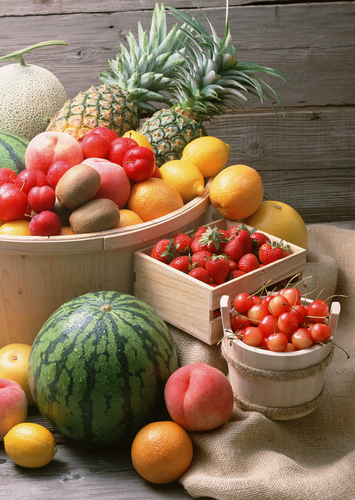Studio 5 Contributor, Kathleen Alder shares tried and true tips for selecting and preparing fresh fruit.
ORANGES, GRAPEFRUIT, LEMONS AND LIMES
• Citrus fruits are an important source of vitamin C.
• They have an intense flavor on their own and can pop the flavor of many other foods.
• They can be used either cooked or raw.
• They can be eaten plain or used with other ingredients.
• They are great in appetizers, salads, drinks, main dishes, and desserts.
• Citrus fruits are available year round.o To select:
▀ Hold the fruit to feel if it is heavy; the heavier it is the more juice it will have.
▀ If the peeling is smooth and tight, it means that it has more fruit inside.
▀ The smell of the fruit should have a faint sweet aroma when it is at room temperature.
▀ Make sure it doesn’t have any soft or mushy spots and is firm all over.
▀ Citrus fruit can be stored at room temperature for 5-7 days, however, it will keep in the refrigerator for 6-8 weeks.• To peel citrus, score only as deep as the peel in four sections. Start the peel at the top by breaking the skin by the stem end and pulling down until all the skin is removed.
• To zest remove only the colored part of the skin with either a microplane grater or special citrus peeler.
• To make wedges for garnish on drinks or to eat. Cut the fruit around the middle (like the equator on the earth) not from the stem to blossom end. Then cut into wedges so it will easily be slipped over a glass or spreads sections easily for eating.
MELONS:
▀ All melons can be frozen but must be eaten only slightly thawed.
▀ Melons are sweet enough that nothing else needs to be added before eating.
▀To select:o Choose melons that are heavy for their size.
o Make sure there are no tears in the skin
o The spot where it lay in the field should be yellow.
o Make sure the stem has pulled off, not cut.
o Buy whole melons as they are fresher and there is less chance for contamination.o Cantaloupe
▀ To select:
▀ Should have a slightly sweet but not strong smell at the stem end.
▀ To test for ripeness, push the stem end, the more give when you push the riper the fruit is.
▀ To cut cantaloupe or honeydew:• Cut the melon in half from stem end to blossom end.
• Remove the seeds with a large spoon.
• With a sharp knife, cut the peeling away from top to bottom.
• Cut the fruit into long slices from top to bottom. Then cut into small wedge shaped pieces.
• Refrigerate after cutting.o Honeydew
▀ Should be slightly rough skinned when ripe and green in color, grey melons are not ripe.
▀ The stem end should have a slight fragrance and barely spongy to pressure.
▀ Refrigerate after cutting.o Watermelons
▀ To select:
▀ Should have a waxy, not dull appearance.
▀ The best watermelons have the smallest blossom end and the ugliest skin marked with old scars from bug bites.
▀ To cut:• Cut the melon in half.
• Cut into quarters lengthwise from stem end to blossom end.
• Starting with 1 quarter (repeat with remaining quarters) cut watermelon from rind slicing end to end, (like you would a slice of cantaloupe you get in a restaurant) leaving watermelon on rind for a cutting surface.
• Make 4 cuts lengthwise and then cut across the watermelon about every inch.
• Dump into a large bowl.
• Refrigerate for a great anytime family treat now that it is all cut up and ready to serve.PINEAPPLE
▀ Pineapple is one of the most expensive tropical fruits to ship because it has to be ripe before it is picked and has a very short market life and bruises easily.
▀ To select:
o Pick fruit that has no visible damage or soft spots
o It should not have a strong sweet smell as this will mean that the fruit has begun to ferment.
o To test for ripeness, pull one of the innermost top leaves straight up. If it comes out easily, the fruit is ripe.▀ To cut:
▀ Cut the top and bottom off.
▀ Slice the outside skin off with a deep cut working from blossom to stem end making sure to cut deep enough to remove all of the skin.
▀ To remove the core, cut the pineapple in quarters from top to bottom and then remove the core from the strip. There is a pineapple corer for about $10 that you can buy that will allow you to make slices without cores or to be used whole and filled for decoration.STRAWBERRIES
o Strawberries are the most popular fruit.
o When people think of strawberries it is mostly for jam, strawberry shortcake and for eating on cereal.
o Strawberries can be eaten raw or cooked, eaten plain or with sauces and sugar.
o To select:
o They should be firm with a waxy exterior with no blemishes or bruises.
o To cut:
o Use a vegetable peeler to remove the stem end.
o Use whole, cut in slices or in quarters.
o If berries need to be sweetened, use Equal or Splenda because it keeps the fruit from weeping and continuing to juice once it is cut.















Add comment